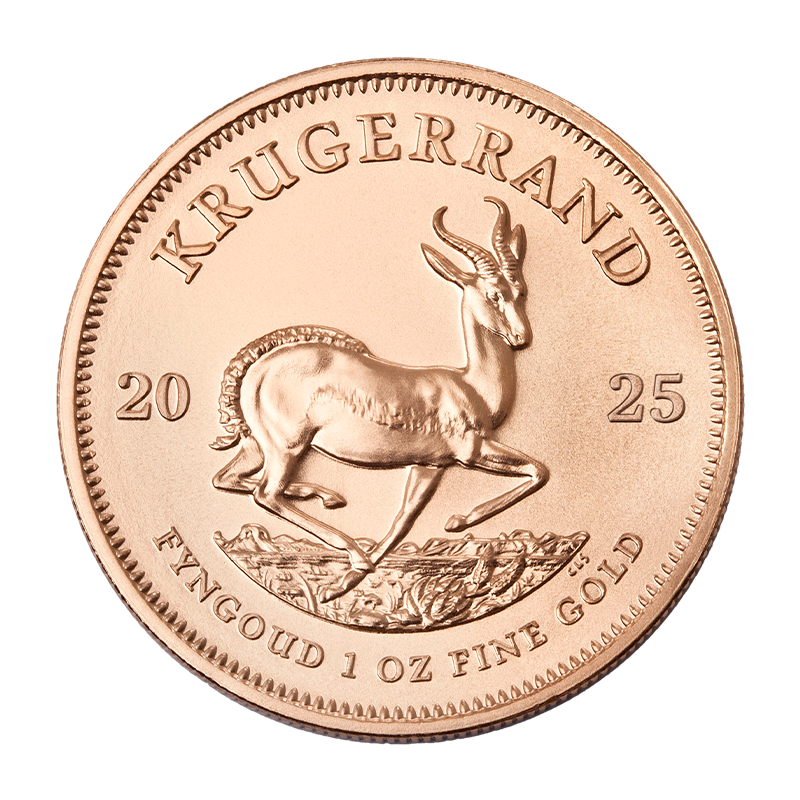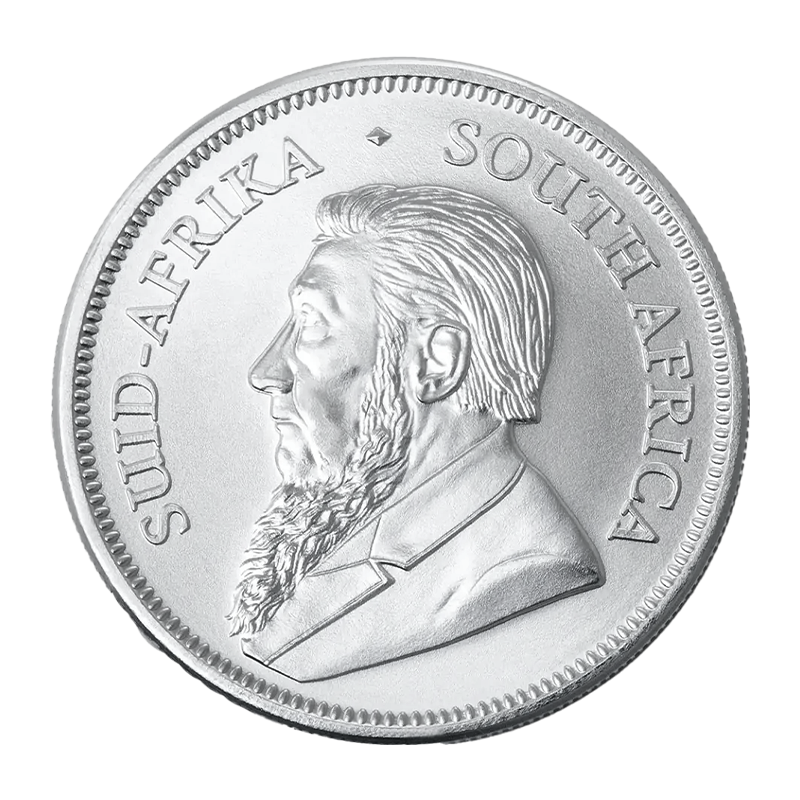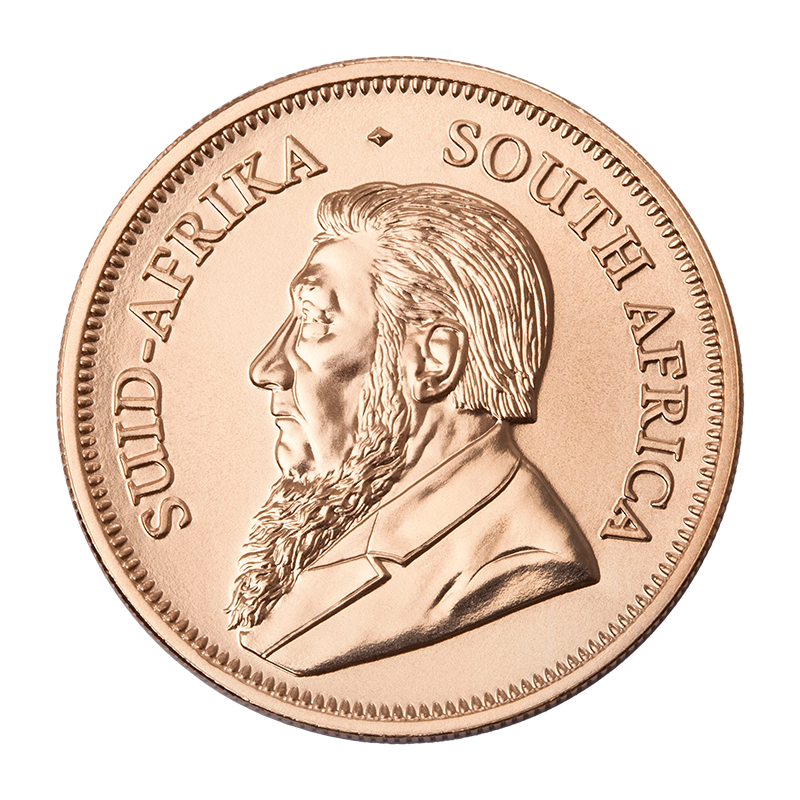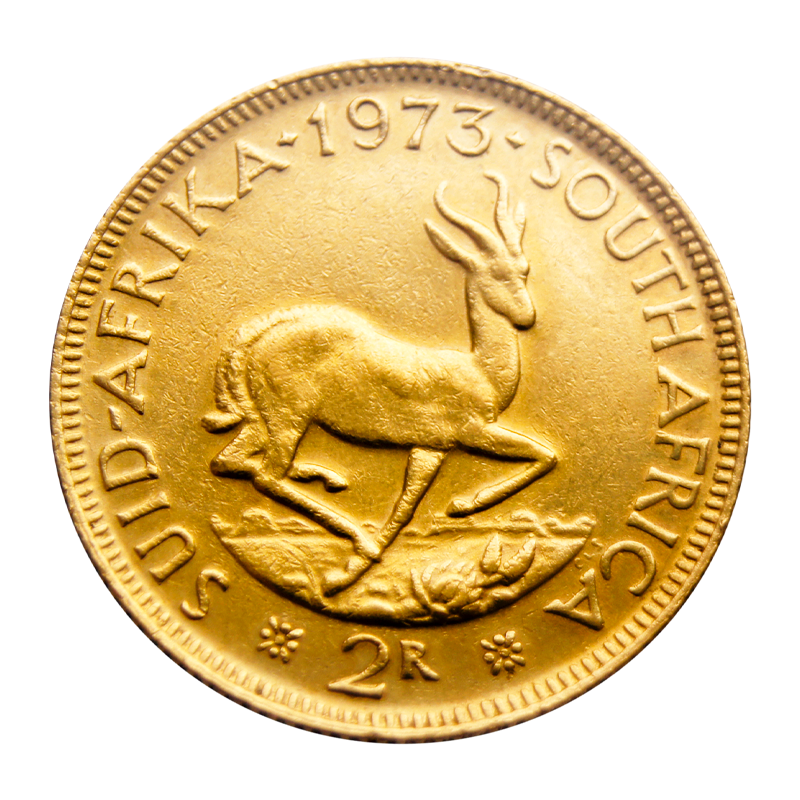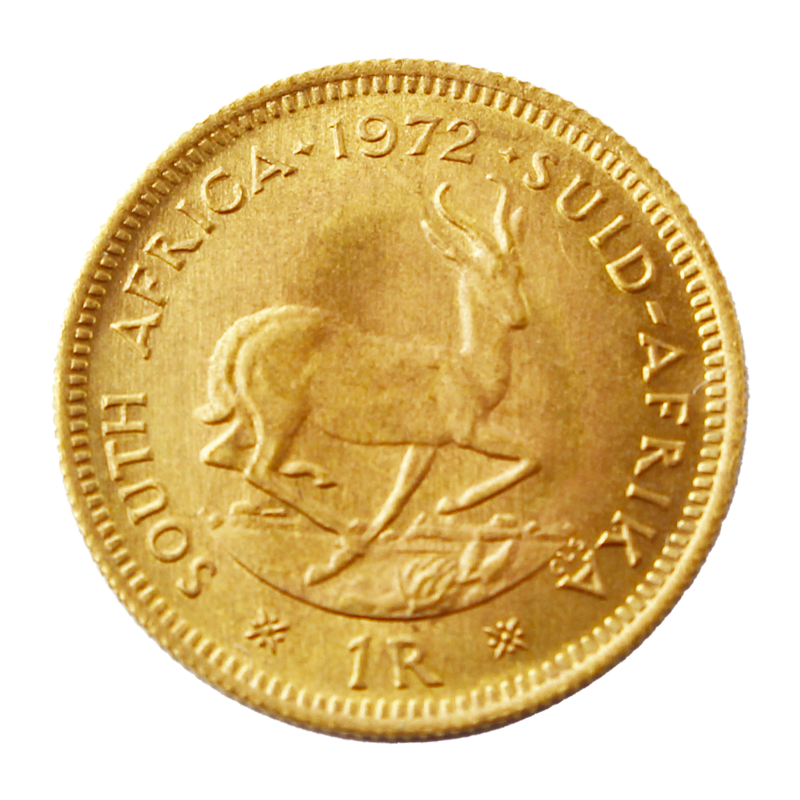Interesting facts about Krugerrand coins
Origin and history of the Krugerrand coin
The Krugerrand coin was introduced in 1967 by the South African Mint Company and the Rand Refinery – as the world's first modern gold investment coin. Named after Paul Kruger, whose portrait adorns the front, it quickly became a symbol of secure investment in gold. The reverse side features the famous springbok antelope, South Africa's national animal. Today, the Krugerrand is in demand worldwide in gold, silver and platinum and in various denominations – both as an investment coin and among collectors.
Material, weight and fineness – what is the Krugerrand made of?
The Krugerrand gold coin is made of 22-carat gold with a fineness of 916.7 ‰. To make the coin more durable, it is alloyed with copper, which gives it its typical reddish-gold colour and increased scratch resistance, making it particularly suitable for everyday use.
Here are the most important technical features at a glance:
- Material: gold (with copper alloy)
- Fineness: 91.67% (22 carat)
- Fine weight: 1 ounce = 31.1 g pure gold
- Diameter: approx. 32.7 mm
- Thickness: approx. 2.8 mm
- Denominations: 1 oz, 1/2 oz, 1/4 oz, 1/10 oz
- Variants: also available in silver and platinum
Whether as a classic 1 ounce gold coin or in smaller denominations, the Krugerrand combines reliable precious metal quality with practical handling. Thanks to its defined fine gold content and weight, each coin is internationally recognised and easily tradable.
Krugerrand in silver – an attractive alternative for investors
In addition to the classic gold version, the Krugerrand has also been available as a silver coin since 2017. It is made of 999 fine silver and offers investors a cost-effective way to invest in physical precious metals. The silver version features the same iconic design with the springbok antelope and Paul Kruger.
Tax advantage: Krugerrand as official currency
Although the Krugerrand coin has no face value, it is legal tender in South Africa – approved by South African legislation (Suid Afrika South Africa). Its actual value is not based on a fixed monetary amount, but is determined by the current daily gold price and the weight of the fine gold it contains.
Particularly advantageous for investors: in many countries – including the United Kingdom – the purchase of investment gold coins such as the Krugerrand is VAT-exempt if certain criteria are met. The combination of legal recognition, global acceptance and tax attractiveness makes the Krugerrand an extremely popular form of investment in physical gold.
Why the Krugerrand is so popular with investors worldwide
For decades, the Krugerrand has been regarded as a reliable investment coin with high value stability. Its global acceptance, ease of trading and alignment with the current gold price make it particularly attractive to investors who rely on physical gold as a long-term investment. The coin is also in demand among collectors due to special vintages, limited denominations or well-preserved specimens.
Whether for asset protection, as an entry point into precious metals or to supplement an existing portfolio, the Krugerrand impresses with its transparency, resale value and decades of trust on the global market.
Frequently asked questions about Krugerrand gold and silver coins
How much is a Krugerrand worth today?
The current value of a Krugerrand gold coin depends mainly on the global gold price, the fineness and the fine gold content of the coin. The classic version contains 1 ounce (31.1 g) of fine gold and is one of the best-known products for investing in physical gold.
As legal tender from South Africa, its market value is based on the current daily exchange rate – at Geiger Precious Metals, the price of a current Krugerrand 1 oz gold coin is currently around £3,200 (depending on the year of issue and market developments). Collector's editions or particularly sought-after years of issue can achieve significantly higher values.
All product information, including price, weight and current purchase prices, can be found directly in the online shop of Geiger Edelmetalle – your partner for secure precious metal investments.
Which Krugerrand is the most valuable?
The most valuable Krugerrand coins are those that have additional collector's value beyond their pure gold value – for example, due to low mintages, historical significance or special minting quality. An outstanding example is the 1967 Krugerrand gold coin, the first year of minting: this numismatic classic from South Africa commands a significant premium over its material value when in good condition.
The 2017 anniversary edition in platinum is also one of the most sought-after products among connoisseurs. In the silver sector, the 2018 Krugerrand 1 oz silver ‘Premium Uncirculated’ is very popular. For investors, however, the classic 1 oz Krugerrand gold coin with high fineness and stable fine gold content remains a reliable means of wealth accumulation and a fixture in long-term investment strategies.
Is it better to buy gold bars or Krugerrands?
Both forms have advantages – here is a quick comparison:
- Krugerrand gold coin
✓ Easily tradable worldwide
✓ High recognition value
✓ Available in small denominations
✓ Popular with collectors and investors - Gold bars
✓ Lower minting costs for large weights
✓ Ideal for larger investments
✓ Less relevant for collectors
Conclusion: If you want to invest flexibly, tradeable and at the same time with potential collector's value, the Krugerrand is a very good choice.
Why does the Krugerrand fetch such a high price when sold?
The Krugerrand often fetches a higher price when sold because it is known worldwide, easily tradable and in high demand. It also offers a high degree of trust and resale value, making it attractive to dealers and investors alike. If it is in good condition and from a sought-after year, it may even fetch a premium above its pure gold value. The stable demand for physical investment gold also has a positive effect on the purchase price.
Are older Krugerrands worth more?
Not all, but selected older vintages of the Krugerrand can be worth more – especially if they:
- are in excellent condition (uncirculated),
- come from years with low mintages,
- are sought-after years for collectors (e.g. 1967, early 1970s),
- were issued as proof or special editions.
The material value remains the same, but the collector's value can be significantly higher, depending on demand and condition.

